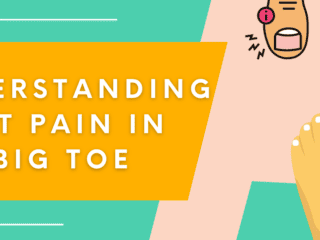Ovarian cysts are common growths that develop on or inside your ovaries. While most common kinds are harmless, don’t cause symptoms, and eventually go away on their own, surgery is still a viable treatment option for many. Check out some of these before and after ovarian cyst surgery photos to see the results.
Ovarian Cyst Surgery Before And After Photos & Videos
Some users across social media platforms like Tiktok have shared their post-op ovarian cyst surgery results…
Crystal (@cmoneymarie23)
Tiktok user Crystal’s experience with ovarian cyst was anything but pleasant. Her cysts had weighed 68 lbs and had grown to the point that it was pushing her ribs and some of her organs and made a visible protrusion on her belly.
Six weeks after getting surgery, the protrusion fully subsided, and her belly is now back to normal. She also says that the surgery greatly alleviated the stress and anxiety the ordeal put her through.

Raquel Rodriguez Soto (@rockiesoto33)
Raquel’s ovarian cysts made her belly swell visibly, making things like going about her routines difficult and taking a toll on her self-esteem. By the time of the surgery, the cyst had grown up to 28 cm in size.
After the surgery, she had a few side effects like bloating and swelling due to the remaining fluid but has since subsided. Her belly is gradually returning to its normal state.

Jeyanne (@jnttjs1011)
Filipina Tiktok user Jeyanne had dermoid ovarian cysts, which grow slowly and are not tender unless ruptured. She experienced abdominal and pelvic pain and suffered intense menstrual pains.
While her operation was successful and her belly has subsided to normalcy, she says she still feels pain around her navel area during her menstrual cycles.

Vani (@glo0mygrl)
Prior to her surgery, Vani found that she had endometriosis and that the ovarian cyst had grown up to 22 cm. It occasionally caused severe pain during her periods.
The doctors did a laparotomy on her, and she lost her right ovary in the process*. While her operation had been successful, she says the ordeal was painful and affected her deeply.
(*Regarding future pregnancies, her doctors say she would need to undergo hormone therapy to avoid miscarriages)

What Are Ovarian Cysts
Ovarian cysts are sacs filled with fluid or semisolid material that form on or within one’s ovaries. The ovaries are small organs in the woman’s pelvis that release an egg approximately every 28 days as part of the menstrual cycle and release the sex hormones estrogen and progesterone, which play an important role in reproduction.
There are different types of ovarian cysts, most of which are usually painless and harmless (benign). But for the most part, ovarian cysts don’t cause symptoms. You likely won’t know you
have one unless your provider finds one during a routine pelvic exam or imaging procedure.
Types Of Ovarian Cysts
There are two main types of ovarian cysts:
- Functional ovarian cysts – Functional ovarian cysts are the most common type. These cysts develop as part of the menstrual cycle and are usually harmless and short-lived.
- Pathological ovarian cysts – These are much less common forms of cysts resulting from abnormal cell growth. Pathological cysts might also develop from the cells used to create eggs or the cells covering the outer part of the ovary.
The risk of cysts being cancerous are higher if you have been through menopause. These cysts can sometimes also be caused by an underlying condition, such as endometriosis. Polycystic ovary syndrome (PCOS) is a condition that causes lots of small, harmless cysts to develop on your ovaries.
Symptoms Of Ovarian Cysts
Ovarian cysts usually don’t show symptoms, but in the instances that it does, it either results from rupturing, if the cysts block the blood supply to the ovaries, or if they’re large in size.
In these cases, the following are the commonly reported symptoms:
- Pelvic pain
- Painful sexual intercourse
- Difficulty emptying the bowels
- Frequent urination
- Heavy periods or lighter periods than normal
- Irregular periods
- Bloating and a swollen abdomen
- Feeling full even after only eating a little
Treatment Options
Large or persistent ovarian cysts, or cysts that are causing symptoms, usually need to be surgically removed, especially if the cyst could be cancerous or eventually become cancerous.
There are 2 types of surgeries performed to remove ovarian cysts:
- Laparoscopy – A surgical procedure that allows a surgeon to access the inside of the abdomen (tummy) and pelvis without making large incisions in the skin. This procedure is also known as keyhole surgery or minimally invasive surgery.
- Laparotomy – It’s an incision made into the abdominal cavity to examine the abdominal organs and aid diagnosis of any problems, including abdominal pain.
Takeaway
While ovarian cysts often cause no symptoms and go away on their own without treatment, in some cases, the cysts can become large or rupture, resulting in painful symptoms, bleeding, and may even become cancerous over time if not treated immediately.
Doctors often recommend laparoscopies and laparotomies to rectify ovarian cysts. If you’re experiencing any ovarian cyst-related symptoms, consult your doctor immediately to discuss further treatment options.








